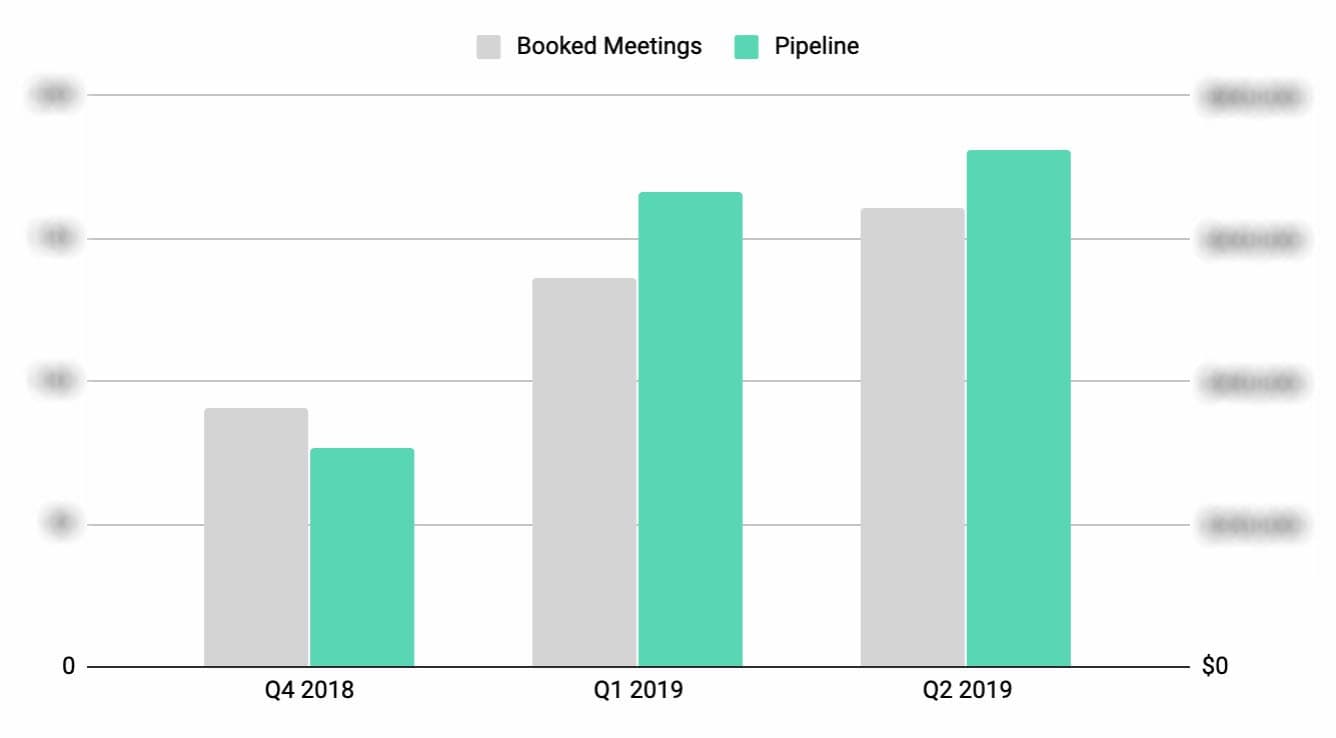Grew Cold Outbound Booked Meetings by 49%
through new approaches to sales cadences, analysis, and testing.

Problem
When I joined Chili Piper, we had just one full cycle account executive (AE) on the sales team and the plan was to hire eight more in seven months. The challenge was to (1) develop instrumentation to determine what part of our outreach was working, (2) reliably scale it to other sales reps as they joined the team, and (3) improve the conversion rate of accounts worked to meetings booked so we wouldn’t burn through our target accounts.
Solution
Step 1 — Build Instrumentation to Measure Cadence Performance
Because we were using SalesLoft and it integrates with Salesforce (SFDC), I was able to build automated dashboards that tracked over 140 different metrics for each cadence. Read about how I did this here. Now I could look at our cold outbound performance and see exactly which meetings were booked from what cadences.
Step 2 — Figure Out What Works
Measure content and messaging
With the instrumentation in place, I started making new cadences and adding keywords to our email step names which we could use to break out performance. For example, we started with persuasion factors (liking, consistency, social proof, etc). Then I started adding keywords for content that we’d include — a certain GIF, an image, etc. From this, I determined what type of approach worked best and what content was most effective at getting our value across.
Optimize strategy and approach to target accounts
Next I looked at our strategy of which accounts to target. We previously were just working accounts our AE had found on online lists like the Cloud 100. Because we had Clearbit Enrichment, I wanted to use some of the data it provided on accounts we had in SFDC. First, I made a list of target accounts that were using Drift. The logic here was that if they were using Drift, they have already bought into the idea that they need to empower their buyers and make it easier for them to connect with sales (which aligned very closely with Chili Piper). I wrote a cadence piggybacking on this belief and positioned our product as an additional way to make it easier for their buyers to connect with them. I did the same for target accounts using intercom and we saw a 71% increase in the rate of accounts worked to meetings booked.
In attempt to replicate this strategy, I wrote a cadence targeting accounts who had a conversion rate optimization tool (VWO, Optimizely, etc). This time, I piggybacked on the idea that if they care about their conversion rate on their website and landing pages, they should also care about the conversion rate after the form submission to a closed deal. As expected, this didn’t perform as well as piggybacking off a chat tool, but still better than our original cadence by 22%.
Customize cadences to the account
The problem with these types of cadences were we couldn’t scale them, but they remained in our back pocket when we could use them. For accounts that weren’t using either of these identified tools, we needed a different approach. Since we were signing new accounts who are vertical leaders, we customized which customers we name dropped as social proof by aligning them as much as possible to the prospect’s industry. Additionally, I had our reps take a screenshot of the prospect’s lead/demo form to put in the first email. This account personalized cadence was a huge 107% improvement over our original cadence and we scaled this to rest of the team and our new hires.
Result
As a team, we were able to increase productivity and efficiency that resulted in a 49% increase in cold outbound booked meetings in Q1 ’19 compared to Q4 ’18 and a 118% jump in pipeline generated. We were trending to improve booked meetings in Q2 ’19 by another 18% and pipeline by 9%.

